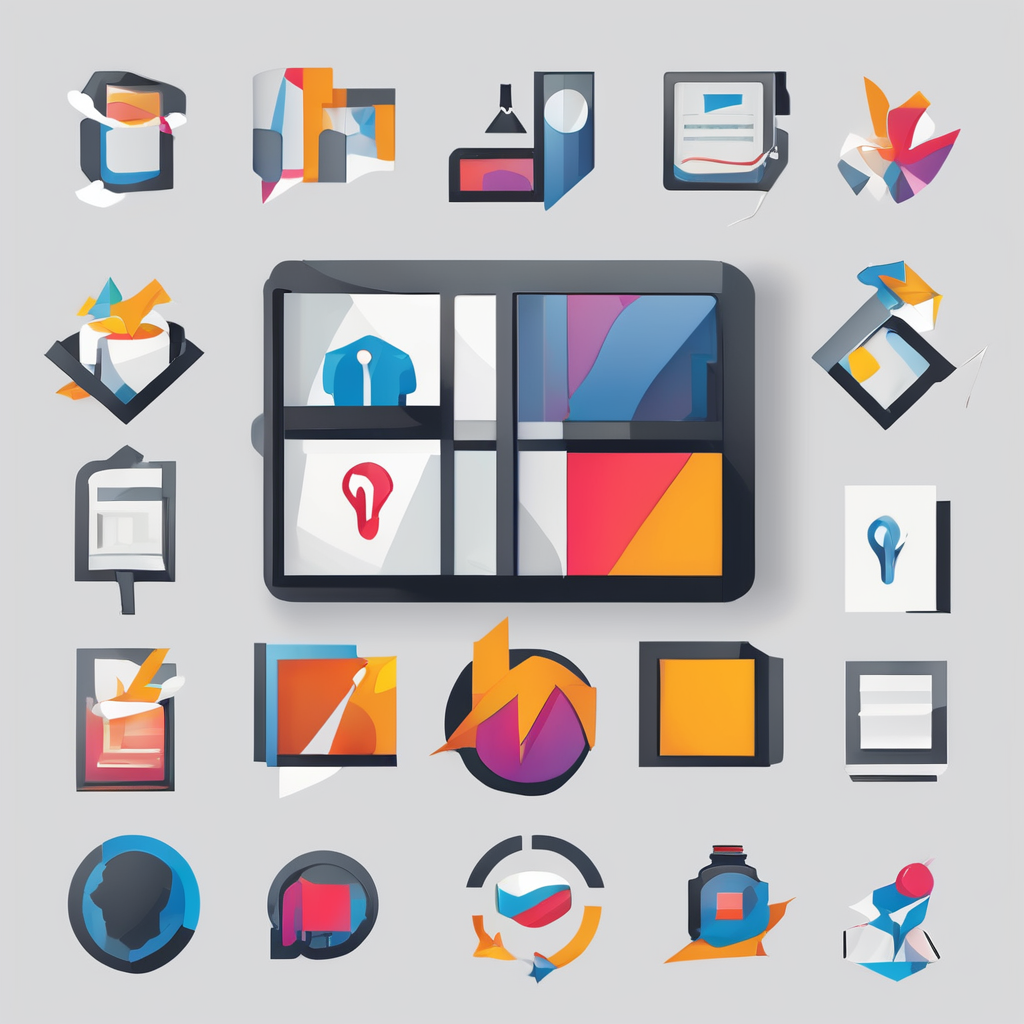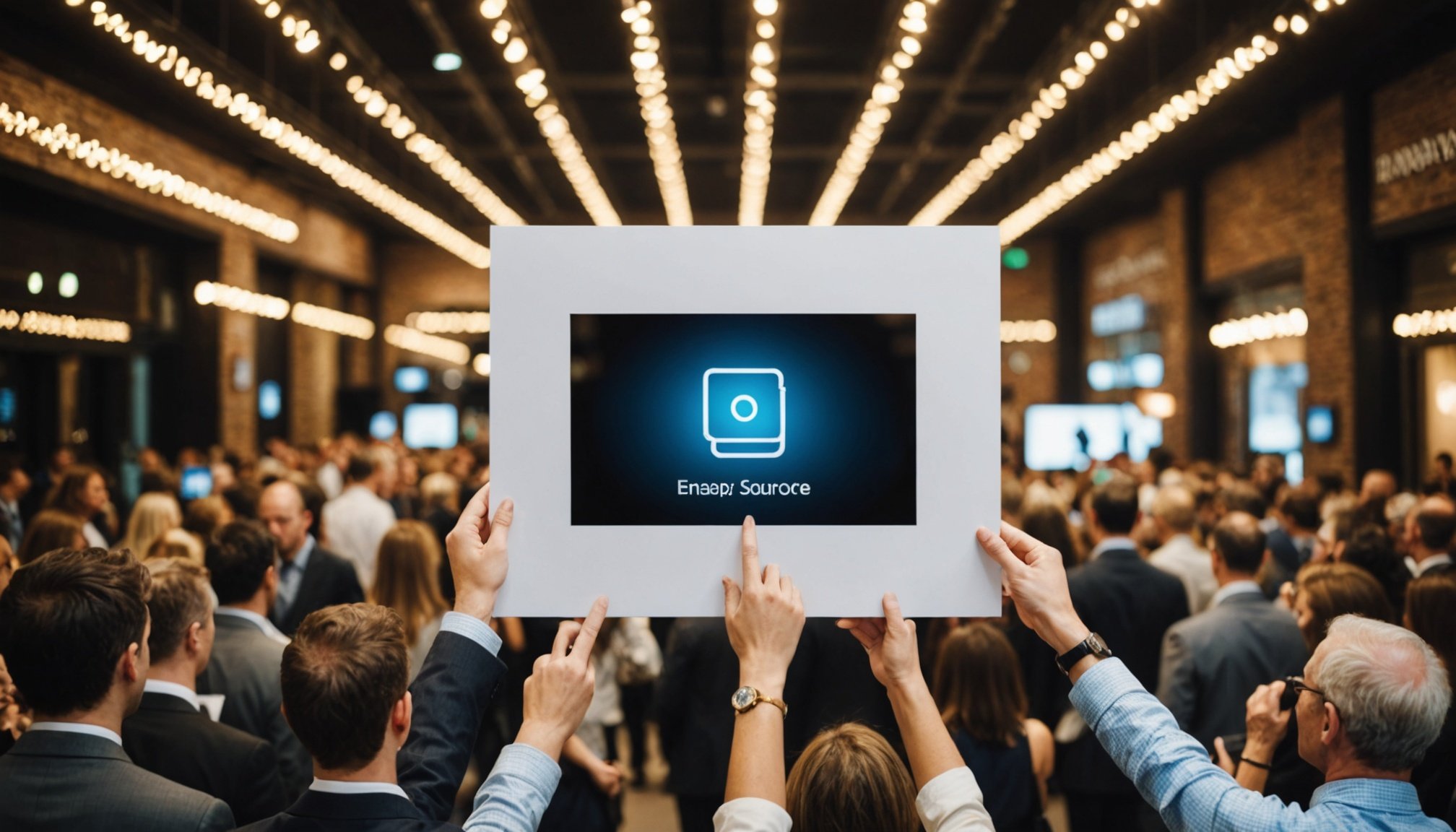Captivating your audience starts long before the event begins. Interactive event technologies are revolutionizing how brands engage with attendees. From virtual reality experiences to gamified learning, these tools create unforgettable connections and elevate brand identity. Explore how innovative solutions like vFairs can transform your events, making them not just memorable, but also impactful. Discover strategies to ignite your brand’s identity through dynamic audience engagement.
Importance of Interactive Event Technologies
A significant evolution in event design and guest involvement is seen through interactive event technologies. These tools redefine how events are orchestrated, shifting from traditional setups to tech-oriented, engaging experiences. Integrating digital advancements, traditional events morph into captivating settings that better connect with participants. Emphasizing tools such as Interactive Event Technologies with H.stories, these innovations redefine audience interactions, offering tailored experiences through AR and video mapping.
Have you seen this : Key components for developing an eco-friendly business model for swansea enterprises
The benefits of adopting interactive event solutions are manifold. These technologies elevate audience engagement by transforming attendees from passive observers into active contributors. Elements like gamification and live polling foster dynamic interaction, while personalized content ensures relevance and engagement. This results in richer experiences that strengthen the connection between brands and their audiences.
Furthermore, event planners are turning to these technologies to provide seamless, hybrid event experiences. By utilizing tech-driven networking and real-time response tools, events are more profound and memorable, catering to both in-person and remote participants. Such advanced techniques not only maximize attendee engagement but also enhance event success by creating personalized, immersive environments that resonate long after the event concludes.
In parallel : Key elements for developing an effective b2b marketing strategy in birmingham”s business landscape
Key Technologies in Interactive Events
Virtual Reality and Augmented Reality
Virtual reality (VR) and augmented reality (AR) have become staples in creating immersive event experiences. They offer virtual event experiences that transport participants to new environments, adding layers of interaction and engagement. Events can use AR to blend digital elements with the real world, like interactive displays that animate and share information creatively. These technologies are invaluable for crafting personalized event experiences, captivating audiences with tailored content.
Live Polling and Audience Response Systems
Live polling tools and audience response systems revolutionize how event interaction unfolds, making attendees active participants rather than passive observers. These tools collect real-time feedback and encourage audience engagement, creating a dynamic flow of dialogue. Organizers use this data to adjust proceedings in real time, improving attendee experience and event responsiveness.
Interactive Displays and Gamification Techniques
Interactive displays and gamification introduce modern event tech tools that transform traditional events into engaging experiences. Gamification in events can drive engagement by turning elements into competitive or interactive formats, like scavenger hunts or trivia. Such strategies provide entertainment and foster deeper connections among participants, promoting sustained interest and interaction throughout the event.
Enhancing Audience Engagement Strategies
Tailoring Experiences Through Personalization
Personalized event experiences amplify audience engagement by crafting unique attendee journeys. Leveraging interactive event technologies, organizers create customized experiences that resonate with individual preferences and interests. This personalization can be realized through tailored content, such as bespoke agendas accessible via an event app, or interactive displays that adapt to attendee behavior. Furthermore, personalized push notifications and targeted networking opportunities contribute to a more engaged and satisfied audience.
Utilizing Feedback for Continuous Improvement
Audience engagement strategies are significantly enriched when event planners harness attendee feedback. Real-time feedback tools, such as live polling, collect valuable insights during events, helping to refine current experiences and improve future ones. Analyzing these data points allows organizers to adjust event dynamics on the fly, ensuring a seamless and satisfying experience. As these insights feed into future planning, they foster a cycle of continuous improvement that enhances audience engagement over time.
Engaging Audiences through Workshops and Masterclasses
Interactive workshops and masterclasses offer hands-on participation, fostering deeper connections and skill enhancement. These formats prioritize learning and engagement, encouraging attendees to delve into subjects with practical applications. Workshops tailored to audience interests utilize technology like AR and VR to bring concepts to life, maximizing the impact and memorability of the experience. By strategically integrating such engaging elements, event planners significantly boost attendee involvement and satisfaction.
Case Studies of Successful Interactive Events
Analysis of vFairs’ Virtual Event Success
vFairs exemplifies how effective communication tech for events can transform traditional gatherings into engaging, modern experiences. Their platform offers interactive event technologies like virtual reality and gamification, crafting a personalized event atmosphere with ease. Attendees enjoy seamless navigation through mobile event apps, which enhance networking and interaction. Innovative features such as multi-track webinars and AI-driven content amplify engagement, ensuring lasting impressions.
Highlighting Innovations by H.stories
H.stories, through their inauguration events, showcases the integration of modern event tech tools like video mapping and augmented reality. These tools foster unparalleled audience engagement, aligning with specific brand values. By employing interactive workshops and artistic performances, H.stories not only captivates but also educates, demonstrating the benefits of interactive event solutions.
Learning from Tech Shop’s Interactive Solutions
Tech Shop enhances events using technology-driven networking opportunities. Their use of immersive installations, robotic displays, and interactive games provides engaging technological experiences. Interactive displays for conferences and audience-tracking solutions are standout features. Each emotional response captured via camera arrays is analyzed in real-time, allowing for profound audience interaction and feedback responsiveness.
Challenges and Solutions in Implementing Event Technologies
Common Obstacles in Technology Adoption
Implementing interactive event technologies can often present challenges. Firstly, the integration of modern event tech tools may be hindered by compatibility issues with existing systems. Additionally, a frequent challenge is ensuring network stability for technology-driven networking opportunities, which is pivotal for maintaining participant connectivity. Budget constraints can also limit organizers in adopting new technologies, balancing investments between technological advancements and other event necessities.
Strategies for Seamless Integration of Tech
To address these challenges, effective planning and strategic resource allocation become essential. Collaborating with tech-savvy partners can provide tailored solutions, increasing the likelihood of smooth integration. Utilizing hybrid event technologies allows organizers to leverage cost-effective solutions, delivering robust virtual event experiences without incurring excessive expenses. Training staff on new systems minimizes technical difficulties, facilitating a seamless event experience.
Ensuring Personal Connection in a Technology-Driven Environment
While technology plays a significant role, retaining personal interaction remains vital. Balancing tech and personal interaction in events requires careful design. Utilizing technology to enhance rather than replace human elements is crucial. Personalized event experiences can be fostered through interactive displays that encourage direct engagement, ensuring that the human touch persists amidst technological advancements.
Future Trends in Event Technology
Predictions for the Next Decade of Event Technologies
Upcoming trends in event technologies are set to revolutionize how experiences are created and shared. We can expect greater reliance on virtual and augmented reality applications, transforming attendee immersion and interaction. A key focus will be on developing interactive displays for conferences that respond to user motions and inputs, enhancing engagement.
As personalization becomes a standard expectation, innovations in event tech will center around tailoring experiences to individual preferences. Technology-driven networking opportunities and mobile experiences for event participants will increasingly rely on data analytics, ensuring every interaction is meaningful and effective.
Rise of Hybrid Events and Continued Virtual Engagement
The shift towards hybrid event technologies will see a blend of virtual event experiences alongside traditional setups. These formats maintain accessibility and broaden reach, proving essential in a post-pandemic landscape with social distancing solutions in events. Continued innovation will support engaging remote attendees through compelling digital experiences, with a strong emphasis on interactive workshops and audience-centric design.
Emphasis on Sustainability and Eco-Friendly Practices
Future trends will highlight sustainable practices. Event planners are leaning into environmental impact of event technology by using eco-friendly solutions like digital signage and virtual platforms. This aligns with a stronger societal focus on promoting sustainability with interactive tech, ensuring that events remain green without compromising user experience.
Tools and Resources for Event Planners
Overview of Essential Event Management Software
Event management software serves as the backbone for orchestrating seamless events and provides functionalities like registration, ticketing, and communication tools. Key features include the ability to manage audience engagement strategies efficiently while offering real-time analytics to assess event success. This empowers planners to make data-informed decisions, optimizing resources and boosting cost-effective event technology solutions.
Evaluating User-Friendly Platforms for Diverse Needs
Choosing user-friendly event platforms is integral for catering to varying event sizes and formats. Planners should prioritize platforms that support interactive displays for conferences and enable technology-driven networking opportunities. Simplified interfaces and intuitive navigation are critical, ensuring that both organizers and attendees find the technology accessible and engaging, ultimately improving attendee satisfaction.
Budgeting for Technology Implementations in Events
Investing wisely in technology requires careful consideration. Opting for cost-effective event technology solutions without compromising on features is essential. Planners should explore platforms that offer a staggered pricing model, accommodating different budget levels. This ensures that even organizations with limited resources can leverage modern event tech tools, such as mobile apps and augmented reality applications, enhancing overall virtual event experiences.
Through strategic selection and implementation, event planners can effectively harness technology to deliver impactful and memorable events.











